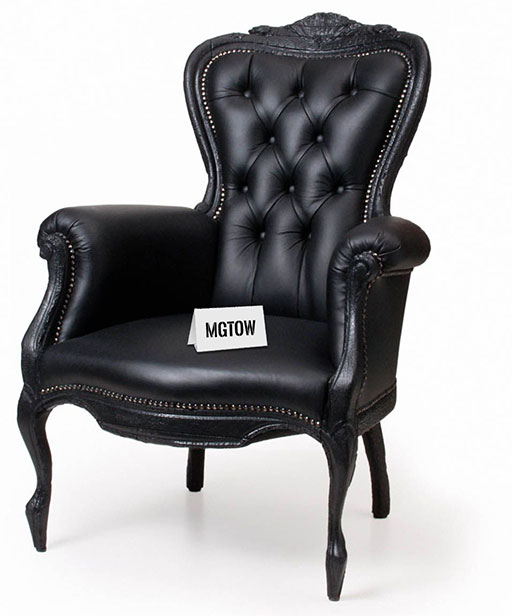Home › Forums › Philosophy › Menace of the Herd or Procrustes at Large (Excerpt): Woman Today
Tagged: Essay, feminism, Philosophy
This topic contains 1 reply, has 2 voices, and was last updated by ![]() RoyDal 5 years, 3 months ago.
RoyDal 5 years, 3 months ago.
- AuthorPosts
This is an excerpt from a book entitled Menace of the Herd, or Procrustes at Large by a man named Erik von Kuehnelt-Leddihn. Leddihn was a socio-political theorist amongst other things was a giant amongst men in his field. He was a columnist for National Review for 35 years or so, but more importantly wrote a number of important works on Democracy, Monarchy, and Totalitarianism. You can get a feel for who he was on this Wikipedia article.
This particular excerpt is Part I, Section V of the above mentioned book. It is entitled Woman Today, and I thought it was interesting enough to share. Leddihn’s books are an education in and of themselves, although he can be a bit technical at times, which isn’t surprising considering the man spoke eight languages and could read in an additional seventeen languages. Nevertheless, for any MGTOW, his ideas and discussions are well worth browsing through. Keep in mind that Leddihn was Catholic, which shows clearly in his writings.
For those who are interested in the larger work, the book is in the public domain, and can be downloaded either in PDF or ePub format from http://www.mises.org. Here is the direct link (http://mises.org/document/3082/The-Menace-of-the-Herd-or-Procrustes-at-Large). If I’m breaking rules by listing the link, please let me know. A number of Leddihn’s other books can be found on the Mises.org site. Other notable works that are well worth the read are Leftism, Liberty or Equality, and Monarchy & War.
Without further ado…
V
WOMAN TODAY
“It is life one loves in woman.” — Jacques Chardonne, in Aimer c’est plus que l’amour.
IT IS self-evident that an integral horizontalism and collectivism demands a mechanistic identification of man and woman. (This school of thought comes finally to the “logical” conclusion that there should be no difference between human beings and beasts.)71 Absolute equality and identification of man and woman carried to the extreme has very far-reaching consequences not only in the realm of politics but also in the sphere of culture and biopsychology.72The term “equality” in this connection is used neither in the metaphysical nor in the legal sense. We use “equality” here rather with a meaning of functional identity — which may have some connection with the legal term but lacks practically every metaphysical aspect.
This functional identity — the Germans would use the term Gleichsetzung — following a large-scale emancipation of women never necessarily increases the influence of women on culture, civilization, or even politics. Owing to the wrong use made of the best female talents, we see rather a diminution of feminine influence ensuing from such a process. The historical, cultural, or religious role of a Pompadour, Maintenon, du Barry, a Catherine II, Elizabeth of England, a Jeanne d’Arc, Catherine de Medici, Teresa of Ávila, Hroswitha, Isabel of Spain, Mary Stuart, or Catherine of Siena is known to all of us. Their influence, independently of the circumstance where it was of a positive or negative nature, was hardly ever matched by women of the ochlocratic or communistic world in individual cases.Collectively, women now might have more influence in Denmark than in Portugal, but our analytical interest is centered on woman and not on women.
Of course there is a competing list. But just as we cannot compare Miss Sylvia Pankhurst with Maria Theresa, it is an equally hopeless enterprise to draw the parallel between Comrade Alexandra Kollontay and Catherine of Russia (a worthy comparison in one sense at least), or between Ellen Key and St. Teresa of Ávila. To compare Miss Margaret Sanger or Miss Mary Stopes with St. Hildegard of Bingen, or Aimée Semple MacPherson with Christina of Sweden is almost blasphemy.
A “high” anonymous average supplanted these extraordinary women in the “progressive” Northwest of Europe. Even the history of American democratism is written practically without the names of women, and there are no new outstanding female leaders in the ranks of the Russian Communists. All we have is the fading memory of the old revolutionaries — of Dora Kaplan, Vera Figner, Angelika Balabanov, the Krupskaya, and Mademoiselle Zassúlitch who fired at the Prefect of St. Petersburg with impunity.* These violent female Leftists who lived in the shadow of the imperial double-headed eagle are now supplanted by a completely anonymous herd of average women.**
Still it cannot be denied that the influential women organizations the world over have a tendency to favor ochlocratic and Leftist ideals. Here it must be borne in mind that the great criterion in the old hierarchic world was sanctity, intellect, courage, and, perhaps, birth. Nobody objected in the fourteenth century to a woman bearing twelve children or writing books or achieving sanctity. All true virtues were not less admired in women than in men. Women had, therefore, in the Middle Ages, contrary to general belief, the fundamental human “careers” open to them. Yet ochlocratic society, suspicious of medieval ideals (if not openly hostile to them), sees in a human being primarily a citizen, a voter, and a contributor to the phantasmagory of progress, i.e., a money-maker (and in the political sense a taxpayer).73 These concepts gave rise amongst certain women to that weird craze for “equality” which increases in strength the further to the left their ideology stands. The ultimate logical conclusion is the desire to share in the levée en masse for collective killing in uniforms, and to serve in the army as we have witnessed it in Finland (the Red woman regiment of Tampere, 1917), under Kerensky, in the USSR, and in Spain. Yet it is depressing to witness the rapid decline of extraordinary achievements of women in Western Civilization after their emancipation.
One very frequently has opportunity to hear an argument in favor of identitarianism between the sexes which lacks every sound biological basis. This argument runs shortly as follows: “In the early stages of mankind it was only physical power which counted. The men were therefore in the position to ‘enslave’ women. Today we are so enlightened that we understand this mistake of the dark past. Women given equal education and equal opportunity will be equal to men. Yet they cannot catch up from one generation to the other. The injustices of thousands of years have left their mark on them. It may take a couple of generations until they recover completely.”
It is needless to emphasize that this argument lacks also every anthropological justification. Matriarchal cultures are exceptional but certainly not rare amongst primitive races. In most European countries women have been admitted during the past one, two, or even three generations to universities and yet their record is meager because even if properly educated their functional placement in life is usually made on egalitarian principles. Women lack, finally, certain intellectual abilities which men frequently possess. This has nothing to do with inheritance. Every man has a “clever” father and a “suppressed” mother; the girls are in the same boat and it is totally unscientific to believe in anything like “idento-sexual heredity.” The chances to inherit under equal circumstances specific traits from either parent are equal for every child of either sex. Yet the legend of the female handicap by centuries of suppression still goes on.
All this does not imply a female inferiority. But there is a very marked difference between man and woman, and that not alone in the physical and biological sense. Man is not “superior” to woman but he is primary. There are almost no human institutions, inventions, ideas, formations which have not a male origin. There are many functions which man and woman have in common, there are others still which have greater affinities with one sex than with the other and, finally, there are things which are the exclusive privilege of either man or woman. The reason for the decline of female influence is largely to be found in the disregard of these proclivities, as we have already said before. This should not be misconstrued in order to support national-socialist views on women. The three K’s for women —Küche, Kinder, Kirche (Cooking, Children, Church) — are part of the unofficial program of the party. Yet this attitude is only seemingly “antidemocratic.” It is superdemocratic in a chronological sense.
National socialism, as superdemocracy, is past the illusions of early democracy. The Nazis have not shut their eyes to the experience that woman is ordinarily inferior to man as an ochlocratic citizen, i.e., as a political “animal” and as money-maker. Here her relegation to kitchen and nursery is actually a punishment because she did not make good as a voter or worker. Women in the Third Reich are in a certain sense “in exile.” Theoretically they may return when they promise to “make good.”* In the meantime we must consider the Third Reich to be, in a deeper sense, homoerotic. The monolithic state and the monolithic society should consist of only one single sex. A truly Catholic society on the other side always relied on thinking, praying, and loving women.
But the process of assimilation in the democratic and identitarian world is not confined only to voting and working. The radical feminists always wanted in their frantic identitarianism to eliminate the difference between the sexes. Somehow they tended to deny or to hide the whole biological status of women.** There were certain aspects of feminine life which this weird horde of furies and ancient spinsters wanted to abolish; they wanted the elimination of female suffering and therefore also of female dignity.
Dignity is naturally an “aristocratic” virtue, best demonstrated in adverse circumstances, in bearing of suffering, in facing death, childbirth, or the guillotine. Dignity as an attitude is also something personal and not collective. Democratism never liked dignity. Nothing infuriates the howling mob more than dignity, and it is rather interesting to compare the attitude of the political prisoners on the scaffold during the French Revolution with the “Trotzkyist conspirators and wreckers” at the time of the Moscow trials, 1936–1938. Yet it must be admitted that this comparison is perhaps not fair. The Red torturers of 1938 are far more “progressive” people who studied anatomy and psychology more thoroughly than their Parisian forerunners.
It was also symptomatic that after the great victory of democratism in 1918 the fashions showed marked masculine elements in female dress and feminine elements in the sartorial make-up of men. Women wore male cut clothing and bobbed their hair and the men donned Oxford trousers. We entered in 1919 a “practical” and “pragmatical” age. Comfortism made itself felt. The universities were half empty and the polytechnics overcrowded. Young men wanted to become dancers, engineers, and bankers.
There were movements all over Europe to abolish the humanistic middle school, the Gymnasium, the lycée. It seemed that Wall Street, the M. I. T., and Watson’s Behaviorism had won the war. In Germany the Neue Sachlichkeit, a rather dull and pragmatic new style of life, came into being. The palaces decayed and two-room apartments with bathrooms and kitchenettes came into fashion. It was an age of youth, skeptical sobriety, equality, utility, comfort, and proficiency. All these factors together created what people called in 1925 the “new female type,” that quaint creature with shingled hair who fought against the penal laws directed against abortion; this “new woman,” that instead of ruling the house and home, now dominated the streets in mass-produced clothes and crowded meetings, controlling them by sheer weight of numbers. There is nothing worse than anonymous masses of women; the man in a crowd subjected to mass hysteria is bad enough but his female counterpart is even more dangerous and degraded.*
The reason for this may be that the male stands for the abstract, the woman for the concrete.74 The concrete submerged in an anonymous mass seems to be the greater trespass against the spirit.75
There is a small group of women that is extremely successful in mercantile or technical enterprises. There are a few excellent female architects, engineers, importers, doctors of medicine, and directors of department stores; the world would probably not even collapse if women would replace men in commercial life. But there are no outstanding female theologians and philosophers; almost no painters or musical composers. Woman, quite able sometimes to acquire skills and technical knowledge, is too much earth bound and essentially of soulful nature (beseelte Natur). This does not exclude the passive enjoyment of the abstract. But while female creativeness is largely biological and physical, man’s creative ability is predominantly a matter of ideas.
Even in the more materialistic professions one often witnesses women sacrificing their specific female strength for some chimeric earthly “equality”; so in America or in the USSR, women on the whole count only as a collective power of mediocrity. Even in these two afore-mentioned countries one finds them ordinarily only in average positions. They try to find their personal happiness, their luck, and their advancement as lawyers, doctors, and managers without very great success. As mothers, courtesans, or saints they might achieve far more. They know that their real strength does not lie in their personalities but in their number; countries menaced by ochlocracy and “progressivism” will therefore abound in female organizations. Yet only human beings who for one reason or the other feel weak or have grievances crowd into mass organizations.* Thus we see progressive womanhood engulfed almost entirely in anonymity and their meagerly blossoming personalities either completely crushed or sacrificed at the altar of a club or a group.76
Socialism, so nearly related to democratism, has a magnetic attraction for certain women. Werner Sombart explains the socialistic tendencies of women by their ressentiment of belonging to what he calls the biologically “inferior” sex. This ressentiment which creates, in his opinion, strong sympathies toward socialism and socialistic ideologies he considers to be based on an inferiority complex arising in specific cases from diseases, bodily deformations, poverty, the belongings to a despised race or the “inferior” sex. He mentions as typical example for his theory Rosa Luxemburg, the hysterical German Communist who was poor, a woman, and a hunchback.
Yet the enthusiasm of some women for democratism lies deeper than all that. It is highly probable that most aspects of democratism have some inner connection with the negative sides of the female character. Snobism,77 the dislike for fixed, philosophical views, the tendency toward anonymity, collectivism, comfortism, geocentrism, and the easy acceptance of compromises, the efforts to gain material security, the strong anthropocentrism, the advocacy of “gentleman” ideals, and the inclination toward a chronical envy (one of the main factors of communism) all belong in the same category.
It could be argued that normal life is after all nothing but a chain of clever compromises. The man who understands how to live well, the Lebenskünstler as the Germans call him, is nothing but a virtuoso in compromises. The hero and the saint, on the other hand, are “clumsy,” quixotic, and maladroit. They have nothing of the Lebenskünstler and cannot help inflicting upon themselves wound after wound. The virtuoso of life, no less than the bonvivant, is a thoroughly feminine as well as effeminate product.78
Women have played a leading role in surprisingly destructive movements—before and after the march of the Dames des Halles to Versailles. It is also probably true that negative traits in the character or the mind of women are far more conspicuous than in men. One need not be a Latin to be more distressed at finding a godless woman than a godless man. A woman is far nearer to the source of life and her detachment from the Creator is something terrifying, bordering on blasphemy.
The horror of death so typical of modern man is probably another feminine aspect of our time.79 “Mediā vitā in morte sumus” is the hymn of a male and hierarchic age. The great thing in the life of the male is death just as love is the keynote of a female life. “Man is the glory of God, but woman is the glory of man,” says St. Paul. The man finds his final reunion with God through the gate of death, but the woman gets the foreboding of such a reunion in her love to a man. Men also love women as children of God but, while this remains an indirect approach to Him, death always remains the shortest route to the Father. This is also the reason why there is such a deep metaphysical relation between love and death.
Yet death is more than love. Viewed from such a male angle, life should be a terrible duel, an agonía in Unamuno’s sense between God and devil, a struggle in alliance with one group of passions against the other passions. Life in itself is a risk which we have to face bravely; all its horrors have a deeper value — war with all its ordeals, hunger, destruction, death, and the inhuman curse of labor and work.
Yes, the curse of labor. So it is written in the Bible and its truth reechoes in the hearts of most men. The male is by nature lazy and unambitious. The industrious man is a truly feminine phenomenon. In male cultures men only work in order to live, but in nations where women domineer, men show ambition, zeal for labor, and they frequently work themselves to death firmly believing that they live in order to work.* On account of the fact that ambition is a female characteristic, women are always going to be outraged at the sight of potential energies which are not transformed into kinetic energies. The mobile life is urban and female. Haste is not only unmanly, but — as Ortega has demonstrated it — also the very negation of our immortality. The Middle Ages was a period without haste, it was male and timeless.
The true man is attracted by an adventurous life while woman stands for security, concerned for the safety of her home and her family.80 The desperate craving for safety is always the surest sign of the effemination of a culture or nation. The replacement of Trust in divine Providence by efficient insurance companies** is always a danger signal which should not be ignored.
________________
71 Cf. the letter of P. J. Proudhon dated Apr. 26, 1852.
72 Cf. the revealing letter in the New Statesman and Nation, May 5, 1934, by Clare Harvey and L. A. Harvey.
73 The political citizen with his commercialized mentality will look at the country or state as a business enterprise in which he shares actively through the taxes. In letters of protest sent to the papers the fact that the writer is a taxpayer will frequently be emphasized. There is also a tendency to pass a law that the unemployed (who does not pay taxes) should be deprived of his right to vote like a shareholder in a company who has sold his stock.
Said Mr. Paul Garrett, Executive of General Motors speaking at the Congress of American Industry in 1940: “Democracy rests not on supermen, but on the good sense of many. Our American democracy’s success is the sum total of millions of individual achievements. Ours is a business civilization. Ours is a hundred-year plan.”
74 Cf. Georg Simmel, Philosophische Kultur, Leipzig, 1911, p. 95.
75 The Dutch psychologist Heymans, once professor of the university of Groningen, seems to have had a glimpse of the main issue although he does not make as much of a case out of it as one should. He draws the following conclusions from the results of an inquest comprising several thousand people: spontaneously a woman is only interested in individual cases, not in the law, the generalizations, in formula based on conception (which is one of the most characteristic traits of masculine mentality). It is our opinion that this formula requires a slight modification. This is the way we should put it: Woman’s mind is directed primarily toward persons, man’s mind is directed toward things. — Dr. Rudolf Allers, L’Amour et l’Instinct, Études Carmélitaines, April, 1936.
76 Cf. Leon Samson’s criticism of female “superiority” in America (The American Mind).
77 “Snobbery is indeed a feminine rather than a masculine vice; it appears to show itself among women in a more positive and rabid form.” — Gideon Clark, Democracy in the Dock.
78 About the “hero” (or saint) in relation to his fellow men, see Hermann Swoboda, Otto Weiningers Tod, Vienna, 1923.
79 “In substituting the love of man for the love of God the humanitarian is working in a vicious circle, for unless man has in him the equivalent of the love of God he is not lovely. Furthermore, it is important that man should not only love but fear the right things. The question was recently raised in Paris why medical men were tending to usurp the influence that formerly belonged to the clergy. The obvious reply is that men once lived in the fear of God, whereas now they live in the fear of microbes.” — Irving Babbitt, Democracy and Leadership.
80 The pledge of obedience in the marriage ceremony has naturally been abolished by “progressive” Protestant church communities.
Further reference material:
On genius in women:
Sylvia Kopald, “Where Are the Female Geniuses” in Our Changing Morality, ed. by Freda Kirchwey, New York, 1930. See the “Statistics” on p. 107.
*Vera Zassulitch was acquitted by the jury for the attempted assassination of General Tryepov. With all its inefficiencies and brutalities Imperial Russia always retained a great amount of generosity and social “democracy.” Even in matters of criminal jurisdiction Russia was far more humane than many West Europeans suspect. Exile (not imprisonment in) to Siberia was not a terrible punishment and the death penalty could only be inflicted on persons who had cooperated in the assassination of a member of the imperial family.
**Needless to say that the statistics (even genuine ones) can “prove” that the position of woman is today far stronger than in the days when Dostoyevski and Turgenyev described in their novels so many inspiring female heroines.
*Yet it would be very erroneous to think that National Socialism receives no support from German womanhood. The Führer has a tremendous appeal for many women and National-Socialistic ideas and ideals attract the female character in many ways. Mass spirit, cruelty, political emotionalism are not the noblest feminine characteristics but they must be taken into consideration. The strength of National Socialism is on the emotional and not on the intellectual side.
**There is also a masculine tendency in National-Socialist womanhood. General Ludendorff’s second wife dressed frequently in trousers and was an enthusiastic apostle of female equality. To be a man is also the great dream of many an enthusiastic Hitler girl. It is significant that some female labor camps tried to do away with certain aspects of female physiology—an experiment which ended rather disastrously.
*The club woman is even in the United States an object of ridicule. The whole emptiness and shallowness of modern woman au delà de l’amour is brilliantly portrayed by the caricatures of Helen Hokinson in the New Yorker.
*We understand under this term large collective bodies who pool their interests for common protection (and aggression).
*See the amusing account of Geoffrey Moss in The Siege of the Alcázar about the Spaniard who voluntarily raised the salaries in his workshop. The result was that his employees preferred to work shorter hours with the old wage thus preferring liberty to cash.
**The classic and most natural “old-age insurance” was, needless to say, a numerous and devoted progeny.
Thanks for this. I’m going to dig up works by Erik von Kuehnelt-Leddihn. He’s new to me.
Society asks MGTOWs: Why are you not making more tax-slaves?
- AuthorPosts
You must be logged in to reply to this topic.

921526
921524
919244
916783
915526
915524
915354
915129
914037
909862
908811
908810
908500
908465
908464
908300
907963
907895
907477
902002
901301
901106
901105
901104
901024
901017
900393
900392
900391
900390
899038
898980
896844
896798
896797
895983
895850
895848
893740
893036
891671
891670
891336
891017
890865
889894
889741
889058
888157
887960
887768
886321
886306
885519
884948
883951
881340
881339
880491
878671
878351
877678













